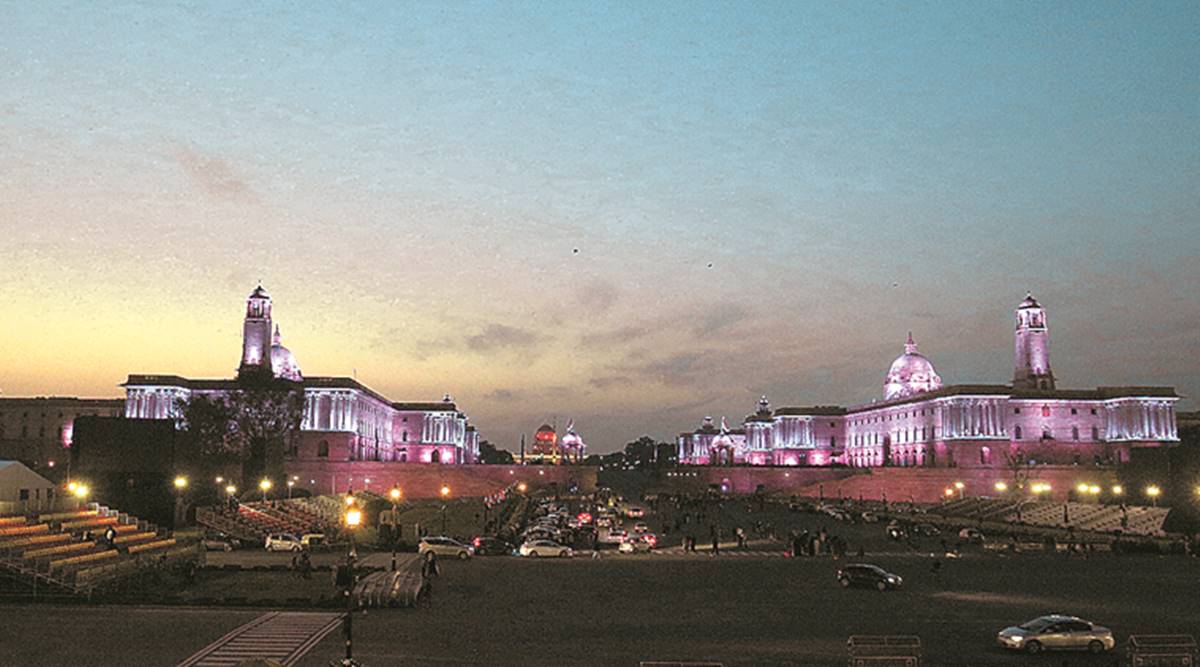 Under the project, a new Parliament building and central government offices will be constructed. (Photo: Amit Mehra)
Under the project, a new Parliament building and central government offices will be constructed. (Photo: Amit Mehra)Written by Madhu Bhaduri
Design and architecture mirror power and politics of the time no less than laws and policies. Imperial power was visible in the grandeur of the palaces of its rulers. When power passed on, the democratic and socialist elites changed some of the architecture of cities in tune with changed power equations. The new elites did not destroy the imperial palaces. These still provide tourists with a glimpse of that bygone era.
Take the city of Lucknow. The monuments of the city from the time of nawabs are its assets. They stand in stark contrast to the parade of statues which Mayawati has left behind as the show of her power as chief minister.
Currently, the BJP government’s decision to destroy the Central Vista in Delhi and replace it with something grander to reflect its own power has sparked controversy. The debate on the urgency of bringing down and replacing history with a new ideology at an enormous cost is an uncanny reminder of the destruction by the Taliban of the Bamian Buddhist relics. The estimated cost of remaking the Central Vista is Rs 20,000 crore — a mind-boggling sum at a time of deep economic crises, when joblessness and hunger are rampant and growing.
Delhi is the world’s most polluted city. What is less known is that half of its population does not have access to disposal of human waste through sewer lines. Human waste is disposed of in open drains running through thickly populated areas, which release the sewage into stormwater drains that used to be the natural channels during monsoon for draining rain water and keeping the city dry. As a result, rain-water drains have got converted into sewage drains better known as “ganda nalas”. Sewage and rainwater together drown the city year after year every monsoon season. In January 2015, the NGT (National Green Tribunal), in a landmark judgment, ordered that sewage should not be released in storm water drains. This was on the recommendation of an engineering expert committee, which advised that small sewage treatment plants (STPs) should be installed in localities to take care of human waste. Five years since, the government has yet to decide how to finance this scheme. In the face of the government’s decision to reconstruct the Central Vista at a cost of Rs 20,000 crore, its inability to finance the installation of small STPs at less than a minuscule fraction of that sum, leaves one in no doubt that the basic needs of the people and the city are of no concern to the decision-makers. The construction of flyovers and roads continue unabated but the installation of STPs in local areas is buried deep in apathy. NGT’s judgment of 2015 had ordered that rain-water drains should not be allowed to carry sewage. They should be made into green zones with pathways for pedestrians and cyclists; unfortunately, a far-fetched dream.
In the absence of clean common toilets, women of East Delhi’s slums live in daily indignity. The designing of clean toilets and parks for them and their families in densely populated areas was once shown in the acche din dream by the same government which now wants a new Central Vista! Maybe, health and cleanliness in the poor parts of the city will be architected some day as a show of political power. That will be a giant step forward for Indian democracy.
The writer, a former IFS officer, was a founder member Aam Aadmi Party
📣 The Indian Express is now on Telegram. Click here to join our channel (@indianexpress) and stay updated with the latest headlines
For all the latest Opinion News, download Indian Express App.